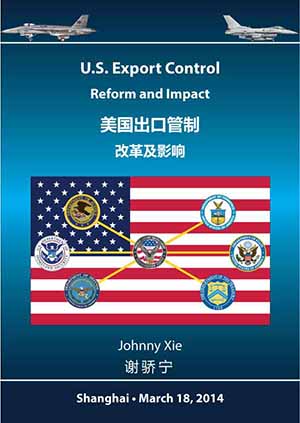U.S. Export Control: Reform and Impact
March 18, 2014.
The U.S. export control system is experiencing an unprecedented reform, which is
the most radical one for the past decades.
The reform:
- Reviewed and adjusted the two control lists under separate statutory authorities,
namely USML and CCL;
- Harmonized various export control violation criminal penalties to a standardized
maximum;
- Transferred many items from the USML to the CCL through public comment and legislative
action;
- Compiled a consolidated screening list of over 24,000 entities from existing Commerce,
Treasury, and State Department screening lists;
- Established the Export Enforcement Coordination Center;
- ......
From the economic operators’ point of view, the Export Control Reform will:
- Simplify the administrative formalities (standardized licensing processes among
the control agencies to avoid confusion, ambiguity and delays);
- Save production and operation costs (the movement of an item from the USML to the
CCL means a U.S. small business will no longer need to register with State as a
manufacturer and pay an annual registration fee); and
- Strengthen export control enforcement (increase the disparate criminal export enforcement
penalties to a standardized maximum of us $ 1 million and imprisonment for 20 years).
These changes are expected to create more business opportunities, bolster the health
and competitiveness of the U.S. industrial base, and impose a higher standard for
trade compliance.
Through this course, Mr. Johnny Xie will:
- Review the fundamentals of United States export control for you;
- Update you on the latest development and trends of the reform; and
- Acquaint you with export control terms and practical compliance skills.
As a result, you will be able to stay current with the U.S. export control reform,
reduce compliance risk, save cost and enhance the competitiveness of your organization.
Syllabus
Module 1: Introduction to Export Control
- Definition;
- Brief History;
- International Conventions and Treaties;
- Multilateral Export Control Regimes.
Module 2: Composition and Functioning of U.S. Export Control System
- Legal Framework;
- Regulatory Bodies;
- Implementation;
- Enforcement;
- Export Control Reform;
- Key Terms.
Module 3: Compliance in Practice
- Product, Technology or Service Description;
- Jurisdiction;
- Classification and ECCN;
- Reasons for Control;
- Country Chart;
- Ten General Prohibitions;
- License Application;
- License Exceptions;
- Validated End-User;
- Special Comprehensive Licenses;
- Automated Export System.
Module 4: Better Compliance Performance
- Export Compliance Program;
- Manual Development;
- Tools and Resources.
Module 5: Summary and Q&A
Photo

|
|
Training Manual
|